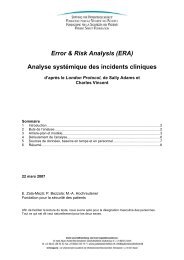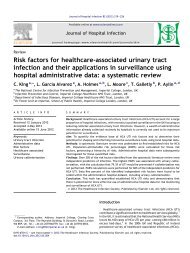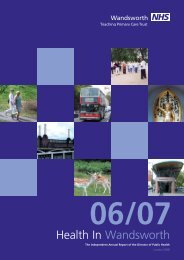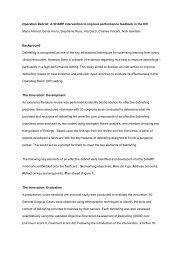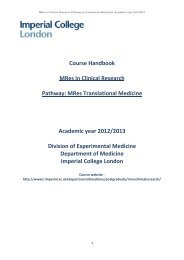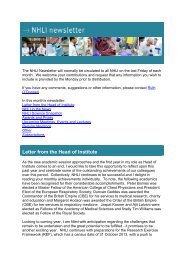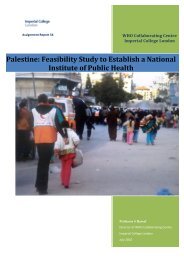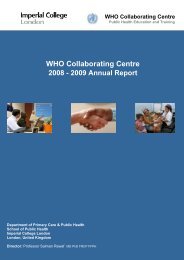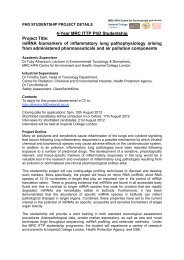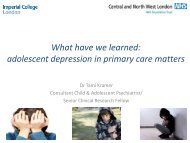QOF Plus Year 1 - Imperial College London
QOF Plus Year 1 - Imperial College London
QOF Plus Year 1 - Imperial College London
Create successful ePaper yourself
Turn your PDF publications into a flip-book with our unique Google optimized e-Paper software.
Evidence to support the proposed indicatorsA Cochrane review by Silagy (2000) found that a single episode of brief physician advice given tosmoking patients can increase the proportion who stop smoking long-term by 1±2%. West (2002)comments that “while this is a small effect, the fact that the advice takes only a few minutes andso is inexpensive and the health gains from cessation are so great, makes this an extremelyimportant and cost-effective life-preserving intervention”. There is some evidence to suggest thatthe effect of this advice on pregnant smokers is similar to that for other smokers (Haug et al.,1994; Senore et al., 1998).A Cochrane systematic review by Lumley et al. (2001) found a significant reduction in smoking inlate pregnancy among women who attended smoking cessation programmes compared with noprogramme. Another systematic review by Law et al. (1995) included a trial of physician advice, atrial of advice from a health educator, a trial of group sessions, and seven trials on behaviouraltherapy based on self-help manuals. This review found that cessation programmes significantlyincreased the rate of quitting.The NICE Clinical Guideline on Antenatal Care (2008) concludes that “there is good-qualityevidence to show that smoking cessation interventions help women reduce smoking anddecrease adverse neonatal outcomes.”Degree of perceived professional consensusEvidence suggests that health professionals recognize the dangers of smoking during pregnancyand support the idea that pregnant women should stop smoking (West, 2002). A consultationwith local stakeholders, including representatives from primary care and public health, showedoverall consensus for the scientific soundness, importance and feasibility of these indicators in<strong>QOF</strong>+.Degree of perceived support from patients and carersSurveys suggest that, even among women who continue to smoke during pregnancy, almost twothirds say they would like to stop (Hughes et al., 1982; Haslam et al., 1997). The NICE ClinicalGuideline on Antenatal Care (2008) conclude that “most women preferred information to beprovided on a face-to-face basis” and that women required a wide range of informationantenatally including advice on smoking cessation.Impact on health inequalitiesResearch has identified a number of factors associated with continuation of smoking inpregnancy. These include younger age, deprived socio-economic backgrounds and lowereducational level (Cnattingius et al., 1992; Mas et al., 1996). Therefore including an indicator in<strong>QOF</strong>+ relating to smoking in pregnancy may help to address health inequalities.41



